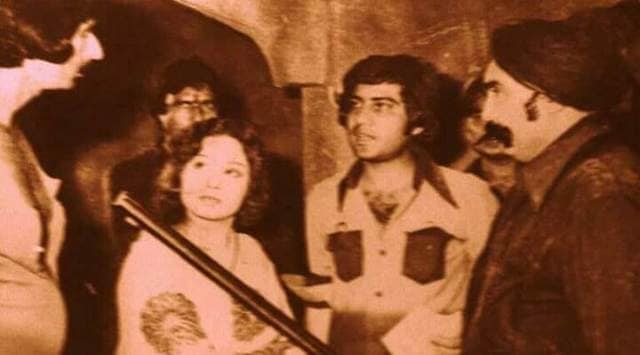- India
- International
Phoolan Devi, Nirbhay Gujjar: In Chambal, a police museum on dacoits
According to Bhind SP Manoj Kumar Singh, the idea is not to eulogise those who once held sway over Chambal but to place their crimes in perspective and “highlight the sacrifices made by the police” to rein them in.
 A still from the making of the film Chambal ke Daaku will be among items on display. (Express Photo)
A still from the making of the film Chambal ke Daaku will be among items on display. (Express Photo)The gun used by Phoolan Devi, a tape recorder that belonged to Nirbhay Gujjar, letters with ransom demands, chains used to tie captives — and stills from the making of Chambal ke Daaku, a Bollywood movie.
There will be all of these and more at a museum that is coming up at Bhind in Madhya Pradesh’s Chambal belt, once the home of some of the country’s most dreaded dacoits.
But what’s really unique about this venture is the force behind it — Bhind Police.
According to Bhind SP Manoj Kumar Singh, the idea is not to eulogise those who once held sway over Chambal but to place their crimes in perspective and “highlight the sacrifices made by the police” to rein them in.
“There will be at least 2,000 digitised police records and material compiled over the past five decades chronicling the crimes of murder, loot and kidnapping carried out by these bandits. The Chambal region became infamous in the country due to these deeds,” said Singh.

The museum, which will be set up in four rooms at the Bhind Police headquarters, will also house “images of the 28 policemen who were martyred in fights with dacoits, 30 who won gallantry awards and several others who were given out-of-turn promotions”, the SP said.
“The dacoits identify themselves as baaghis (rebels) and movies have painted them as Robin Hoods who picked up arms after being victimised by the system. But my aim is to highlight that the crimes they committed had a huge impact on society here, especially the youth,” he said.
With over Rs 3 lakh collected through donations from 26 police stations under Singh’s charge, the museum is being set up with soft lights over exhibits and four Smart TVs that will play videos narrating stories of kidnappings, with families of victims explaining how their lives were scarred.
According to Bhind Police records, around 98 per cent of kidnappings in the region by dacoits took place in rural areas where the main source of income was farming. “The ransom was often around Rs 2-3 lakh. To cough up the ransom in the 1970s, a villager had no other option but to sell the farm land that he held, which took him back by at least three generations. We will try to capture these in the audio-visual displays,” said Singh.
Records show that the region was first exposed to guns when several from the Chambal belt were sent to fight alongside the British in World War-I. Upon their return, with poverty and no jobs, many retained their guns to loot the local population for their daily needs. They were helped by the unique terrain, with soil erosion creating maze-like ravines that became ideal hideouts.
“Lack of livelihood due to barren land, a rigid caste set-up and systemic failure forced locals to take up arms. Owing to soil erosion, land in this belt easily turns infertile, depriving people of their agricultural land and pushing them further into poverty,” said Dev Shrimali, a journalist from Bhind who has covered the region for close to five decades.
“Many of the dacoits surrendered on the initiatives of leaders like J P Narayan, Vinoba Bhave and others. By the early 1990s, close to 1,000 bandits had surrendered in UP, Rajasthan and Madhya Pradesh. One of the most prominent bandits of Chambal, Malkhan Singh, surrendered in 1982 followed by Phoolan Devi in 1983 in Bhind,” he said.
Today, according to police estimates, the region has over 1 lakh licensed guns and at least 7 lakh illegal firearms. “But over the past three decades most of those who have taken up arms to loot people are mostly criminals in the garb of rebels,” said Shrimali, adding that he is writing a book on the region.
The police are also looking at developing a tourism route along with the museum, showing the spot where dacoit Paan Singh Tomar died in a police encounter, and MJS college where Phoolan Devi surrendered.
But not everyone is impressed.
Speaking to The Indian Express, Malkhan Singh, the former dacoit, said: “The police keep tarnishing us with colours of their choice. Can someone ask them who made us rebels and dacoits? And what has the system done to rehabilitate those who surrendered based on their promises?”
Apr 19: Latest News
- 01
- 02
- 03
- 04
- 05






































